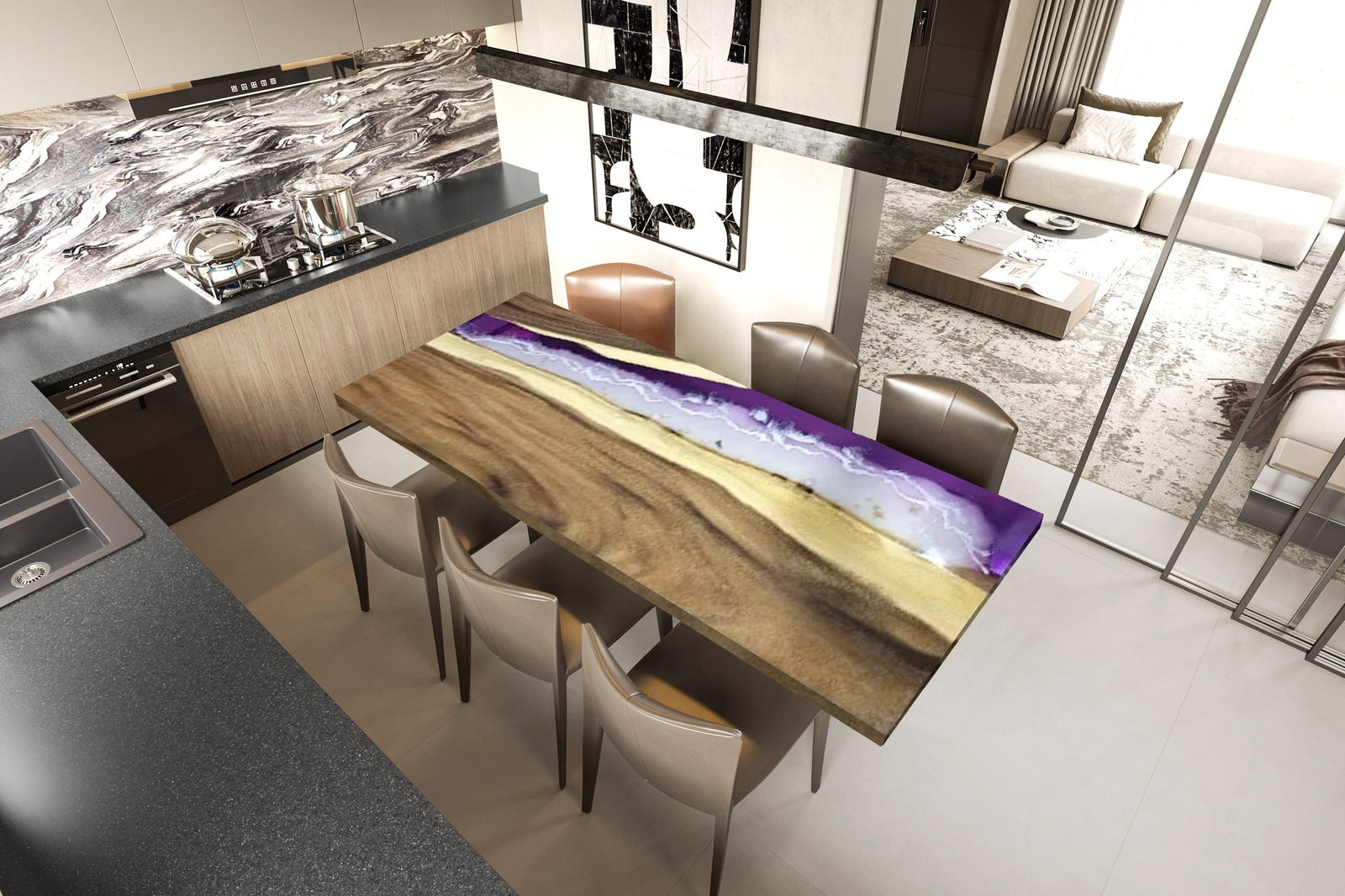Welcome to the captivating world of epoxy resin tables, where artistry meets functionality. As a craftsman and seller of these one - of - a - kind pieces, I'm excited to share with you the elaborate process of creating an epoxy resin table. This blog will guide you through each step of the process, from choosing the ideal piece of wood to the finishing touches that turn each table into a masterpiece.
The Creation of an Epoxy Resin Table
1. Wood Selection
The process starts with choosing the wood. The shape, grain, and natural flaws of the wood are vital as they play a part in the table's final look. We search for wood that has a story to tell, with distinct patterns and textures that will be accentuated by the epoxy resin.
2. Wood and Color Confirmation
Once we've obtained the perfect piece of wood, we then assess its suitability and carefully consider the color scheme. This step is often carried out simultaneously to ensure a harmonious blend between the natural shades of the wood and the vivid colors of the resin. We think about the mood we want to create with the table, whether it's a soothing, earthy palette for a comfortable living room or a bold, contrasting combination for a modern, eye - catching piece.
3. Material Preparation
The wood is then thoroughly cleaned to get rid of any dirt or impurities. This cleaning not only smoothens the wood but also slightly changes its appearance from the initial selection. Natural wood edges are often burned to enhance the visual impact, unless specific requests state otherwise.
4. Resin Application
To prepare the wood for resin application, we first coat it with a layer of resin. This serves two functions: it immobilizes any bacteria or dust and minimizes bubble formation. Resin is favored over paint for its durability and finish.
5. Dimension Setting and Initial Sanding
With the wood properly readied, we precisely cut it to the desired dimensions. This is followed by an initial sanding process, which is necessary for creating a smooth and even surface for the resin to adhere perfectly. The sanding not only eliminates any rough areas but also creates a slightly porous surface that encourages better bonding between the wood and the resin layers.
6. Resin Mixing
The resin is then mixed with great care and precision, following a specific ratio and method to attain the desired consistency. Once mixed, it is placed in a vacuum machine, where it goes through a process to remove any small bubbles that may have formed during the mixing process. This de - bubbling process can take anywhere from 30 to 60 minutes, depending on the resin's viscosity, but it is a crucial step in achieving a flawless finish.
7. Resin Pouring
The resin is poured in layers, with each layer taking approximately 2 days to cure. During this process, any large bubbles that rise to the surface are removed using a torch. This step is repeated for each layer, with more layers added for designs that require more depth, such as ocean wave effects.
8. Demolding and Excess Wood Sanding
Once the final layer of resin has cured, the table is carefully removed from the mold. The edges of the table are sanded to ensure they are smooth and level with the resin surface.
9. Protective Coat Application
To protect the table from scratches and everyday wear and tear, we apply several layers of high - quality protective paint. Each layer is carefully sanded before the next is applied, creating a smooth and seamless finish that fills any pores in the wood and provides a durable barrier. The result is a table that not only looks amazing but also endures over time.
10. Final Inspection and Touch - ups
The table undergoes a thorough final inspection to find any areas that may need additional resin or touch - ups. High spots are carefully polished to ensure the surface is perfectly flat and smooth, and any minor flaws are dealt with precisely. This attention to detail is what distinguishes our epoxy resin tables and guarantees that each piece is of the highest quality.
11. Final Spray Coating
In a dust - free environment, a final coat of paint is applied using a spray gun to achieve a perfect and uniform finish. This final step adds an extra layer of protection and enhances the table's overall appearance, giving it a luxurious and professional look.
12. Final Checks and Packaging
The completed table is taken outside for a final inspection and photography. If everything meets our high standards, it is carefully packaged for delivery.
Challenges in the Process
Bubble Formation: Managing bubble formation during the resin - pouring process is one of the most crucial and challenging parts of creating an epoxy resin table. It demands a combination of accuracy, patience, and experience to ensure that the resin is poured smoothly and that any bubbles are quickly removed. Even the slightest disruption or incorrect technique can lead to bubble formation, which can mar the table's appearance and quality.
Curing Time: Each layer of resin requires a substantial amount of time to cure, which can often slow down the production process. This curing time is essential for ensuring that the resin hardens correctly and forms a strong, durable bond with the wood. However, it can be frustrating for both us and our customers, especially when they are impatiently waiting for their custom - made table. To reduce the impact of curing time, we carefully plan our production schedule and work efficiently to ensure that each step of the process is completed as quickly as possible without sacrificing quality.
Environmental Factors: Dust and temperature are two environmental factors that can significantly affect the resin's application and curing process. Even the tiniest amount of dust can get trapped in the resin, creating unattractive flaws in the final product. Similarly, extreme temperatures can influence the resin's viscosity and curing time, making it more difficult to work with and potentially resulting in a less - than - perfect finish. To lessen these risks, we work in a controlled environment where we can maintain a consistent temperature and humidity level and take extra precautions to keep dust out of the workspace.
The Final Product
The outcome of this meticulous process is a magnificent piece of furniture that is not only practical but also a work of art. Each table is unique, with its own story told through the wood and resin.
Advantages Over Other Products
Durability: Epoxy resin tables are highly durable and resistant to heat and scratches.
Customization: The ability to customize colors and designs makes each table one - of - a - kind.
Aesthetic Appeal: The combination of natural wood and glossy resin creates a visually appealing piece.
Conclusion
Creating an epoxy resin table is a labor of love and precision. Each step in the process is essential for achieving the final product's beauty and functionality. We take pride in every table we create, knowing it will be a centerpiece in someone's home for years to come. Thank you for joining us on this exploration of the art and craft of epoxy resin tables.

